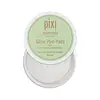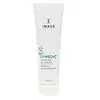What's inside
What's inside
 Key Ingredients
Key Ingredients

 Benefits
Benefits

 Concerns
Concerns

 Ingredients Side-by-side
Ingredients Side-by-side

Water
Skin ConditioningGlycolic Acid
BufferingAminomethyl Propanol
BufferingGlycerin
HumectantRosa Damascena Flower Extract
MaskingDecyl Glucoside
CleansingHamamelis Virginiana Water
AstringentAloe Barbadensis Leaf Juice
Skin ConditioningArginine
MaskingTocopherol
AntioxidantLeuconostoc/Radish Root Ferment Filtrate
AntimicrobialGinkgo Biloba Leaf Extract
Skin ConditioningGlycyrrhiza Glabra Root Extract
BleachingLactic Acid
BufferingSalicylic Acid
MaskingSodium Ascorbyl Phosphate
AntioxidantCaprylhydroxamic Acid
Benzoic Acid
MaskingPropanediol
SolventCaprylyl Glycol
EmollientEthylhexylglycerin
Skin ConditioningPhenoxyethanol
PreservativeWater, Glycolic Acid, Aminomethyl Propanol, Glycerin, Rosa Damascena Flower Extract, Decyl Glucoside, Hamamelis Virginiana Water, Aloe Barbadensis Leaf Juice, Arginine, Tocopherol, Leuconostoc/Radish Root Ferment Filtrate, Ginkgo Biloba Leaf Extract, Glycyrrhiza Glabra Root Extract, Lactic Acid, Salicylic Acid, Sodium Ascorbyl Phosphate, Caprylhydroxamic Acid, Benzoic Acid, Propanediol, Caprylyl Glycol, Ethylhexylglycerin, Phenoxyethanol
Water
Skin ConditioningAloe Barbadensis Leaf Juice
Skin ConditioningVitis Vinifera Fruit Water
Skin ConditioningPropanediol
SolventGlycerin
HumectantCellulose
AbsorbentLactobacillus/Punica Granatum Fruit Ferment Extract
Skin ConditioningPhenoxyethanol
PreservativeAcrylates/C10-30 Alkyl Acrylate Crosspolymer
Emulsion StabilisingAminomethyl Propanol
BufferingCaprylic/Capric Triglyceride
MaskingXylitol
HumectantHydrolyzed Verbascum Thapsus Flower
AntioxidantTapioca Starch
Ethylhexylglycerin
Skin ConditioningOlea Europaea Seed Powder
AbrasiveCamellia Sinensis Leaf Extract
AntimicrobialMicrocrystalline Cellulose
AbsorbentCopper PCA
HumectantMicrocitrus Australasica Fruit Extract
Decyl Glucoside
CleansingHydrogenated Castor Oil
EmollientCI 77492
Cosmetic ColorantSimmondsia Chinensis Seed Oil
EmollientAmyl Cinnamal
PerfumingCitric Acid
BufferingCitrus Aurantium Dulcis Fruit Extract
MaskingCitrus Limon Peel Extract
EmollientJuniperus Virginiana Wood Extract
PerfumingMusa Sapientum Fruit Extract
Skin ConditioningPrunus Armeniaca Fruit Extract
Skin ConditioningPyrus Malus Fruit Extract
Skin ConditioningBiosaccharide Gum-1
HumectantArctium Lappa Root Extract
Skin ConditioningCalendula Officinalis Flower Extract
MaskingCurcuma Longa Root Extract
MaskingLeuconostoc/Radish Root Ferment Filtrate
AntimicrobialNelumbo Nucifera Flower Extract
Skin ConditioningTamarindus Indica Fruit Extract
Skin ConditioningTrifolium Pratense Flower Extract
AstringentLimonene
PerfumingSodium Levulinate
Skin ConditioningGlyceryl Caprylate
EmollientKaolin
AbrasiveSilica
AbrasiveCI 77007
Cosmetic ColorantAnanas Sativus Fruit Extract
Skin ConditioningButter Extract
EmollientCitrus Paradisi Fruit Extract
Skin ConditioningCocos Nucifera Fruit Extract
EmollientCoffea Arabica Leaf/Seed Extract
MaskingCucumis Melo Fruit Extract
Skin ConditioningFragaria Chiloensis Fruit Extract
Skin ConditioningPrunus Amygdalus Dulcis Fruit Extract
Skin ConditioningRubus Idaeus Fruit Extract
AstringentVanilla Planifolia Fruit Extract
Skin ConditioningSodium Anisate
AntimicrobialSodium Benzoate
MaskingPotassium Sorbate
PreservativeTocopherol
AntioxidantAlgin
MaskingPolysorbate 20
EmulsifyingWater, Aloe Barbadensis Leaf Juice, Vitis Vinifera Fruit Water, Propanediol, Glycerin, Cellulose, Lactobacillus/Punica Granatum Fruit Ferment Extract, Phenoxyethanol, Acrylates/C10-30 Alkyl Acrylate Crosspolymer, Aminomethyl Propanol, Caprylic/Capric Triglyceride, Xylitol, Hydrolyzed Verbascum Thapsus Flower, Tapioca Starch, Ethylhexylglycerin, Olea Europaea Seed Powder, Camellia Sinensis Leaf Extract, Microcrystalline Cellulose, Copper PCA, Microcitrus Australasica Fruit Extract, Decyl Glucoside, Hydrogenated Castor Oil, CI 77492, Simmondsia Chinensis Seed Oil, Amyl Cinnamal, Citric Acid, Citrus Aurantium Dulcis Fruit Extract, Citrus Limon Peel Extract, Juniperus Virginiana Wood Extract, Musa Sapientum Fruit Extract, Prunus Armeniaca Fruit Extract, Pyrus Malus Fruit Extract, Biosaccharide Gum-1, Arctium Lappa Root Extract, Calendula Officinalis Flower Extract, Curcuma Longa Root Extract, Leuconostoc/Radish Root Ferment Filtrate, Nelumbo Nucifera Flower Extract, Tamarindus Indica Fruit Extract, Trifolium Pratense Flower Extract, Limonene, Sodium Levulinate, Glyceryl Caprylate, Kaolin, Silica, CI 77007, Ananas Sativus Fruit Extract, Butter Extract, Citrus Paradisi Fruit Extract, Cocos Nucifera Fruit Extract, Coffea Arabica Leaf/Seed Extract, Cucumis Melo Fruit Extract, Fragaria Chiloensis Fruit Extract, Prunus Amygdalus Dulcis Fruit Extract, Rubus Idaeus Fruit Extract, Vanilla Planifolia Fruit Extract, Sodium Anisate, Sodium Benzoate, Potassium Sorbate, Tocopherol, Algin, Polysorbate 20
Ingredients Explained
These ingredients are found in both products.
Ingredients higher up in an ingredient list are typically present in a larger amount.
Aloe Barbadensis Leaf Juice comes from leaves of the aloe plant. Aloe Barbadensis Leaf Juice is best known for helping to soothe sunburns. It is also anti-inflammatory, moisturizing, antiseptic, and can help heal wounds.
Aloe is packed with good stuff including Vitamins A, C, and E. These vitamins are antioxidants, which help fight free-radicals and the damage they may cause. Free-radicals are molecules that may damage your skin cells, such as pollution.
Aloe Barbadensis Leaf Juice also contains sugars. These sugars come in the form of monosaccharides and polysaccharides, folic acid, and choline. These sugars are able to help bind moisture to skin.
It also contains minerals such as calcium, 12 anthraquinones, fatty acids, amino acids, and Vitamin B12.
Learn more about Aloe Barbadensis Leaf JuiceAminomethyl Propanol is used to adjust the pH of products. It is also used as a base to create other organic compounds. Having a balanced pH is important for protecting your skin.
Aminomethyl propanol is safe to use in cosmetics up to 1%. It is soluble in water.
Decyl Glucoside is a glucose-based surfactant and emulsion stabilizer. It is created by reacting glucose with the fatty acids from plants.
Surfactants help clean the skin by trapping oil, sebum, and dirt to be washed away. As an emulsion stabilizer, it stabilizes the ingredients in a product by preventing them from separating.
This ingredient is biodegradable and non-toxic. This ingredient is commonly found in baby shampoos.
Decyl Glucoside is sometimes used to stabilize the UV filter Tinosorb.
Learn more about Decyl GlucosideEthylhexylglycerin (we can't pronounce this either) is commonly used as a preservative and skin softener. It is derived from glyceryl.
You might see Ethylhexylglycerin often paired with other preservatives such as phenoxyethanol. Ethylhexylglycerin has been found to increase the effectiveness of these other preservatives.
Glycerin is already naturally found in your skin. It helps moisturize and protect your skin.
A study from 2016 found glycerin to be more effective as a humectant than AHAs and hyaluronic acid.
As a humectant, it helps the skin stay hydrated by pulling moisture to your skin. The low molecular weight of glycerin allows it to pull moisture into the deeper layers of your skin.
Hydrated skin improves your skin barrier; Your skin barrier helps protect against irritants and bacteria.
Glycerin has also been found to have antimicrobial and antiviral properties. Due to these properties, glycerin is often used in wound and burn treatments.
In cosmetics, glycerin is usually derived from plants such as soybean or palm. However, it can also be sourced from animals, such as tallow or animal fat.
This ingredient is organic, colorless, odorless, and non-toxic.
Glycerin is the name for this ingredient in American English. British English uses Glycerol/Glycerine.
Learn more about GlycerinLeuconostoc/Radish Root Ferment Filtrate is a natural preservative. It comes from fermenting radish roots with a bacteria called leuconostoc.
Leuconostoc comes from lactic acid.
This ingredient has antimicrobial properties and helps prevent the growth of bacteria in a product.
Leuconostoc is used to make the traditional Korean side-dish, kimchi. It is also used to make sourdough bread (both incredibly yummy foods).
Learn more about Leuconostoc/Radish Root Ferment FiltratePhenoxyethanol is a preservative that has germicide, antimicrobial, and aromatic properties. Studies show that phenoxyethanol can prevent microbial growth. By itself, it has a scent that is similar to that of a rose.
It's often used in formulations along with Caprylyl Glycol to preserve the shelf life of products.
Propanediol is an all-star ingredient. It softens, hydrates, and smooths the skin.
It’s often used to:
Propanediol is not likely to cause sensitivity and considered safe to use. It is derived from corn or petroleum with a clear color and no scent.
Learn more about PropanediolTocopherol (also known as Vitamin E) is a common antioxidant used to help protect the skin from free-radicals and strengthen the skin barrier. It's also fat soluble - this means our skin is great at absorbing it.
Vitamin E also helps keep your natural skin lipids healthy. Your lipid skin barrier naturally consists of lipids, ceramides, and fatty acids. Vitamin E offers extra protection for your skin’s lipid barrier, keeping your skin healthy and nourished.
Another benefit is a bit of UV protection. Vitamin E helps reduce the damage caused by UVB rays. (It should not replace your sunscreen). Combining it with Vitamin C can decrease sunburned cells and hyperpigmentation after UV exposure.
You might have noticed Vitamin E + C often paired together. This is because it is great at stabilizing Vitamin C. Using the two together helps increase the effectiveness of both ingredients.
There are often claims that Vitamin E can reduce/prevent scarring, but these claims haven't been confirmed by scientific research.
Learn more about TocopherolWater. It's the most common cosmetic ingredient of all. You'll usually see it at the top of ingredient lists, meaning that it makes up the largest part of the product.
So why is it so popular? Water most often acts as a solvent - this means that it helps dissolve other ingredients into the formulation.
You'll also recognize water as that liquid we all need to stay alive. If you see this, drink a glass of water. Stay hydrated!
Learn more about Water